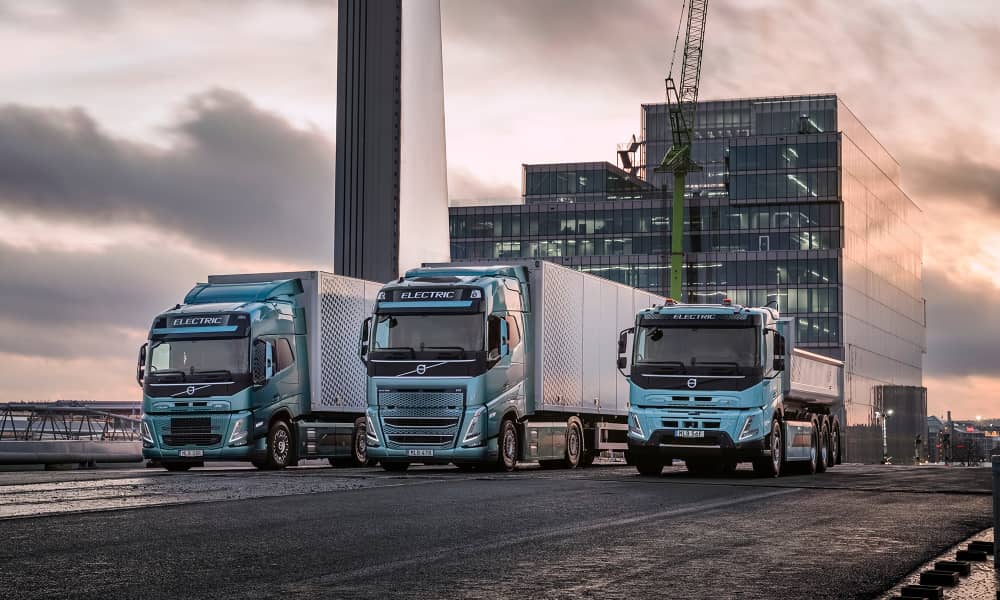I see them pass by in silence. Accustomed to the noise of a powerful engine, having a large vehicle so close by, yet completely silent, is an unimaginable spectacle. They, traditionally, have roared with their spirited engines; columns of smoke emanate from their exhausts, and the smell of petroleum reaches even the most accustomed of noses.
But this silent movement through big cities is a guarantee for the environment; for us humans, who have been living with these pollutants for so long, which cloud large cities and cover vegetation in soot.
It’s true that powerful oil-powered vehicles largely determined development. It’s almost unimaginable to see an economy advance that isn’t supported by a good transport system. But the time has come to curb environmental pollution, and the experts, the legislators, and the governors agree that it is a priority. Therefore, the way vehicles obtain their fuel is transforming. Manufacturers have already internalized this, and although it’s a slow process, they will ultimately prevail.
One of these vehicles that will dominate in time are electric ones.
Electric Vehicles (EVs) represent the transition towards more sustainable mobility. Unlike combustion cars, they run on one or more electric motors powered by energy stored in rechargeable batteries. Their advantages are numerous: zero emissions during use, extremely quiet and smooth driving, immediate acceleration, and significantly lower maintenance costs due to the absence of oil, belts, or complex exhaust systems. Furthermore, their energy efficiency is far superior, converting around 80% of the battery’s energy into motion, compared to 20-30% for a thermal engine.
In the European context, the most popular and established brands in 2025 are still a combination of traditional manufacturers that have made an aggressive transition towards electrification and new specialized players. Brands like Volkswagen, Tesla (especially the Model Y and Model 3), Peugeot (with models like the e-208 or e-2008), and BMW (with its i4 and iX series) are among the best-selling. Hyundai and Kia (with their IONIQ and EV6 models) also stand out for their innovative technology and attractive designs, remaining high on the sales lists.
Focusing on Spain, the market shares trends with Europe but with nuances. Tesla maintains a very strong presence, with the Model Y often being the best-selling electric vehicle monthly. However, mainstream brands with more accessible prices have a crucial market share. Volkswagen and Peugeot are extremely popular, followed closely by Renault (with its Megane E-Tech and the renewed Zoe) and Citroën (with the ë-C4). The Spanish brand Cupra (with the Born) is also a very common choice, showing that Spanish consumers seek a balance between price, range, and design.
The main disadvantage regarding battery charging, although infrastructure is improving rapidly, remains the time it takes for a full charge and the availability of ultra-fast points compared to the immediacy of refueling. While filling a gas tank takes minutes, charging an electric car, even on 150 kW fast chargers, can take between 20 and 40 minutes to reach 80% battery. Home charging on a conventional outlet is very slow, potentially extending to over 24 hours, making it almost essential to install a wallbox charging point in a private garage for an optimal experience. And let me explain, a wallbox is specifically designed to handle the high power and long time required to charge a car. A normal household socket is not as safe for this and can overheat, causing electrical risks.
Regarding range, technology has advanced enormously. In 2025, most new models in the mid-to-high market offer real ranges between 350 and 600 kilometers on a full charge, according to the WLTP cycle (the European standard).
It is crucial to understand that the real range can be 10-20% less due to factors like highway speed, use of climate control, outside temperature, or terrain topography. However, for daily use and most planned long trips, this range is more than sufficient.
In conclusion, the electric vehicle has established itself as a real and mature alternative. The European and Spanish markets offer a wide range of models from both traditional and new brands, covering diverse needs and budgets. Although the challenge of charging time persists, the growing network of ultra-fast charging stations and ever-increasing ranges are mitigating this “range anxiety.” The choice of an electric vehicle largely depends on access to charging at home or work, but for a growing number of drivers, its advantages clearly outweigh its current limitations.
In the context of freight transport, electric cargo vehicles (from vans to heavy trucks) are key to decarbonizing urban and interurban logistics. Brands like Mercedes-Benz (with its eSprinter and eActros truck), Volkswagen (with the e-Crafter family), Ford (e-Transit), and Renault (with its Kangoo E-Tech and Master E-Tech) lead the European market. Specialized players like Volvo Trucks and Tesla with its Semi are also emerging, although the latter still has a very limited presence. Their main operational advantage in cities is access to low-emission zones, reduced noise pollution, and energy costs per kilometer that are much lower than diesel.
The major disadvantage for these vehicles, even more critical than for passenger cars, is the logistics of charging. An electric truck’s battery is enormous and requires extremely high-power chargers (megawatts) for acceptable downtime, an infrastructure that is still very scarce. Furthermore, the additional weight of the batteries reduces the allowable payload, a crucial factor for the profitability of the transport business. Although the range for urban deliveries is more than sufficient, for long-distance transport it remains a technological and infrastructure challenge that is expected to be resolved in the coming years with advances in batteries and the implementation of green corridors with ultra-fast chargers.
Have any thoughts?
Share your reaction or leave a quick response — we’d love to hear what you think!





